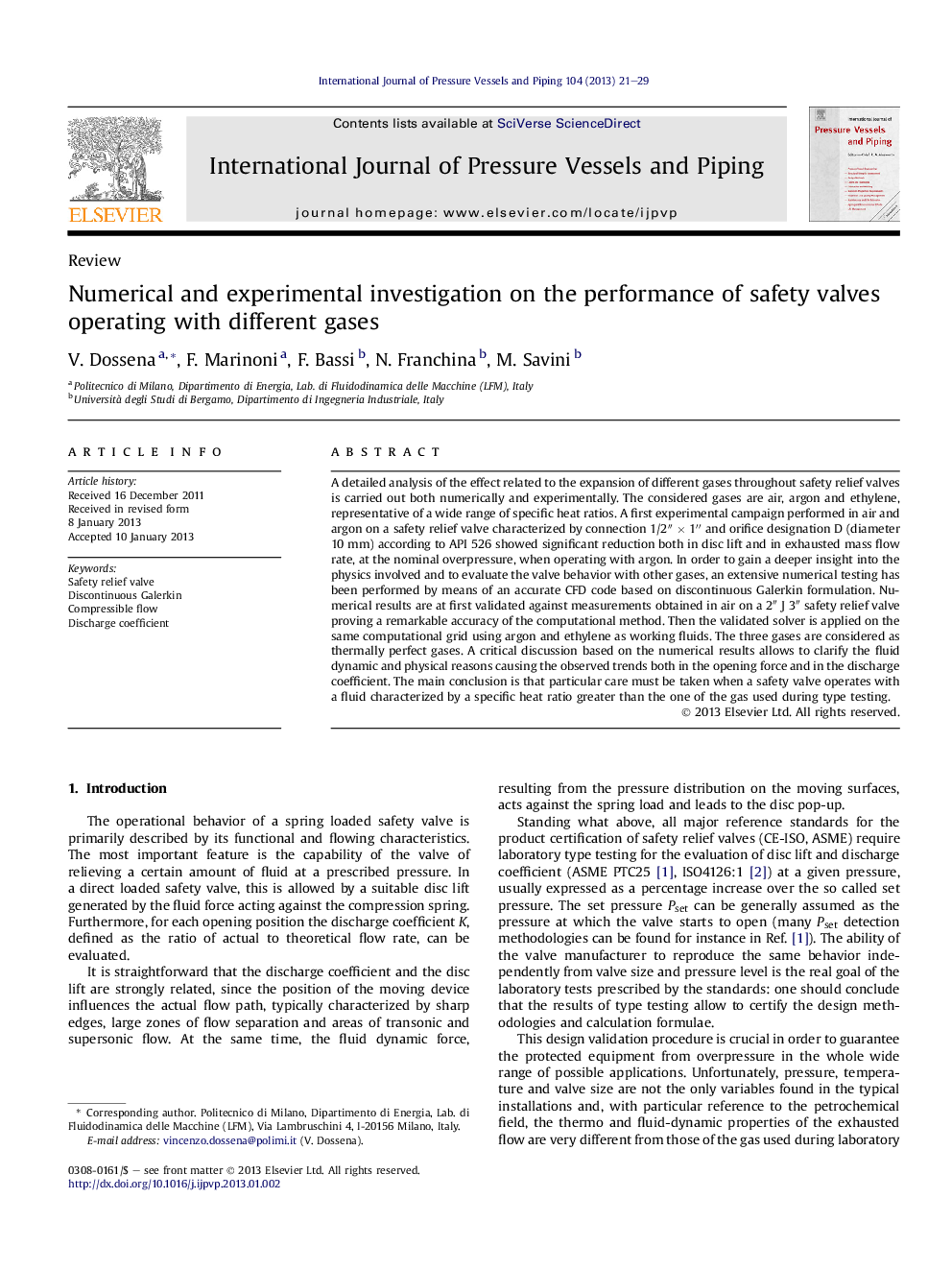| Article ID | Journal | Published Year | Pages | File Type |
|---|---|---|---|---|
| 788412 | International Journal of Pressure Vessels and Piping | 2013 | 9 Pages |
A detailed analysis of the effect related to the expansion of different gases throughout safety relief valves is carried out both numerically and experimentally. The considered gases are air, argon and ethylene, representative of a wide range of specific heat ratios. A first experimental campaign performed in air and argon on a safety relief valve characterized by connection 1/2″ × 1″ and orifice designation D (diameter 10 mm) according to API 526 showed significant reduction both in disc lift and in exhausted mass flow rate, at the nominal overpressure, when operating with argon. In order to gain a deeper insight into the physics involved and to evaluate the valve behavior with other gases, an extensive numerical testing has been performed by means of an accurate CFD code based on discontinuous Galerkin formulation. Numerical results are at first validated against measurements obtained in air on a 2″ J 3″ safety relief valve proving a remarkable accuracy of the computational method. Then the validated solver is applied on the same computational grid using argon and ethylene as working fluids. The three gases are considered as thermally perfect gases. A critical discussion based on the numerical results allows to clarify the fluid dynamic and physical reasons causing the observed trends both in the opening force and in the discharge coefficient. The main conclusion is that particular care must be taken when a safety valve operates with a fluid characterized by a specific heat ratio greater than the one of the gas used during type testing.
► Effects of different gases on the discharge capacity and operational characteristics on safety relief valves. ► Influence of different specific heat ratio on safety relief valves discharge coefficient. ► Skilful application of Discontinuous Galerkin CFD solver to safety valves performances prediction.
